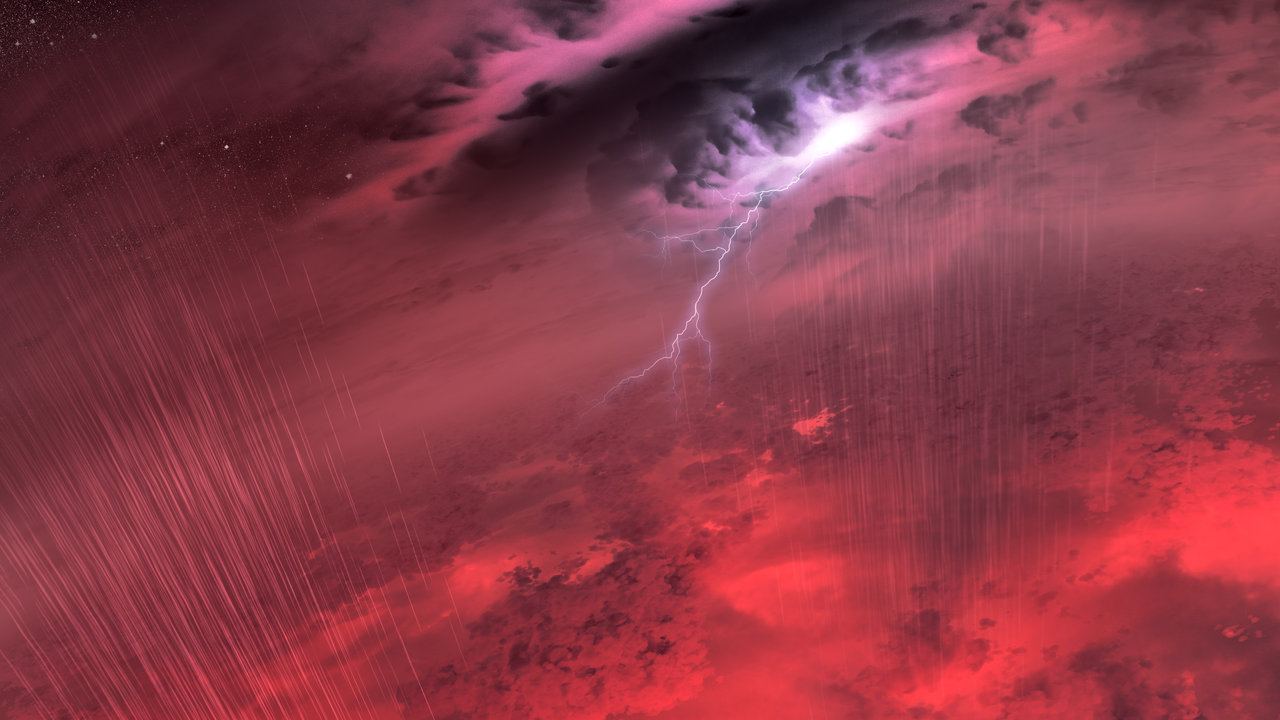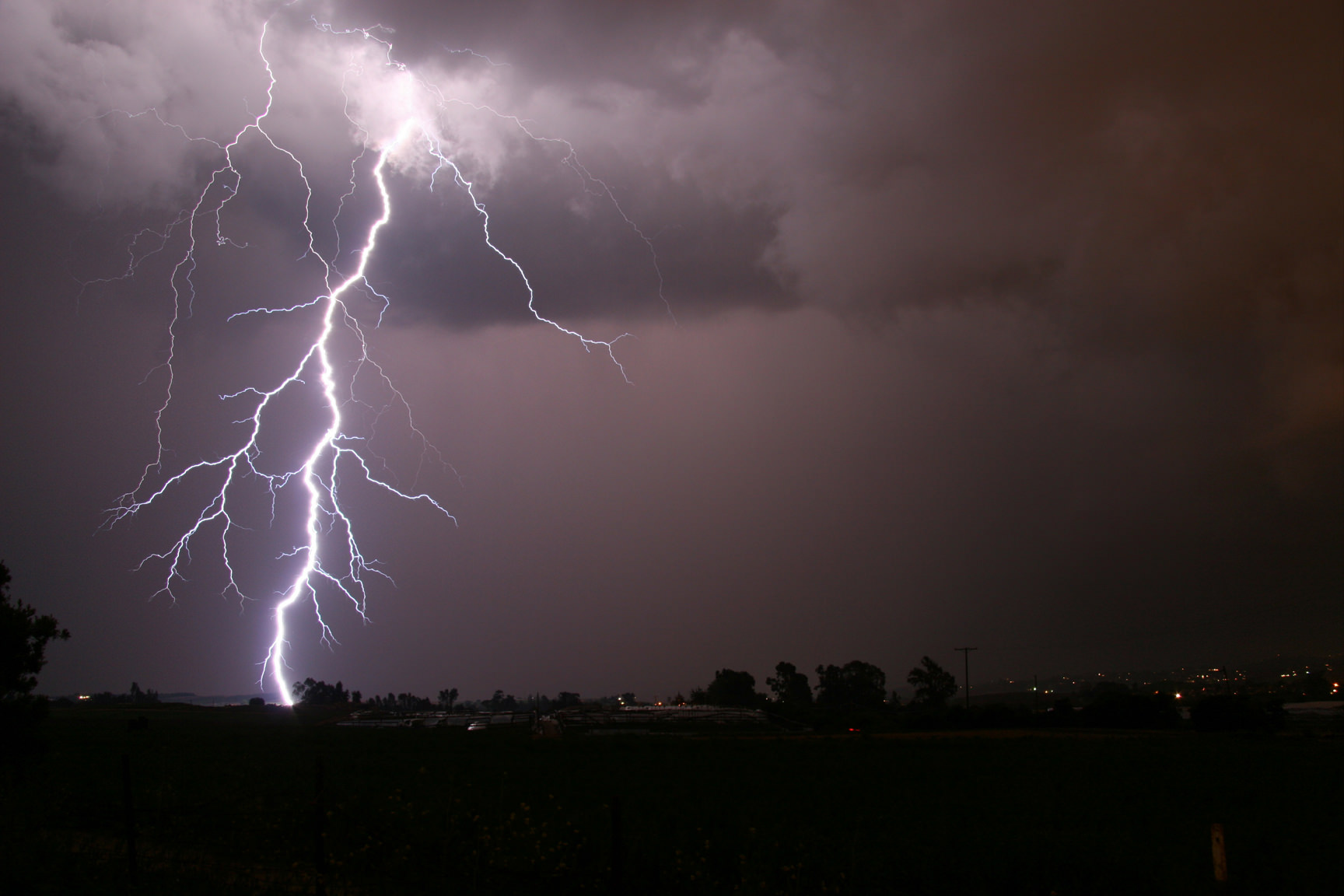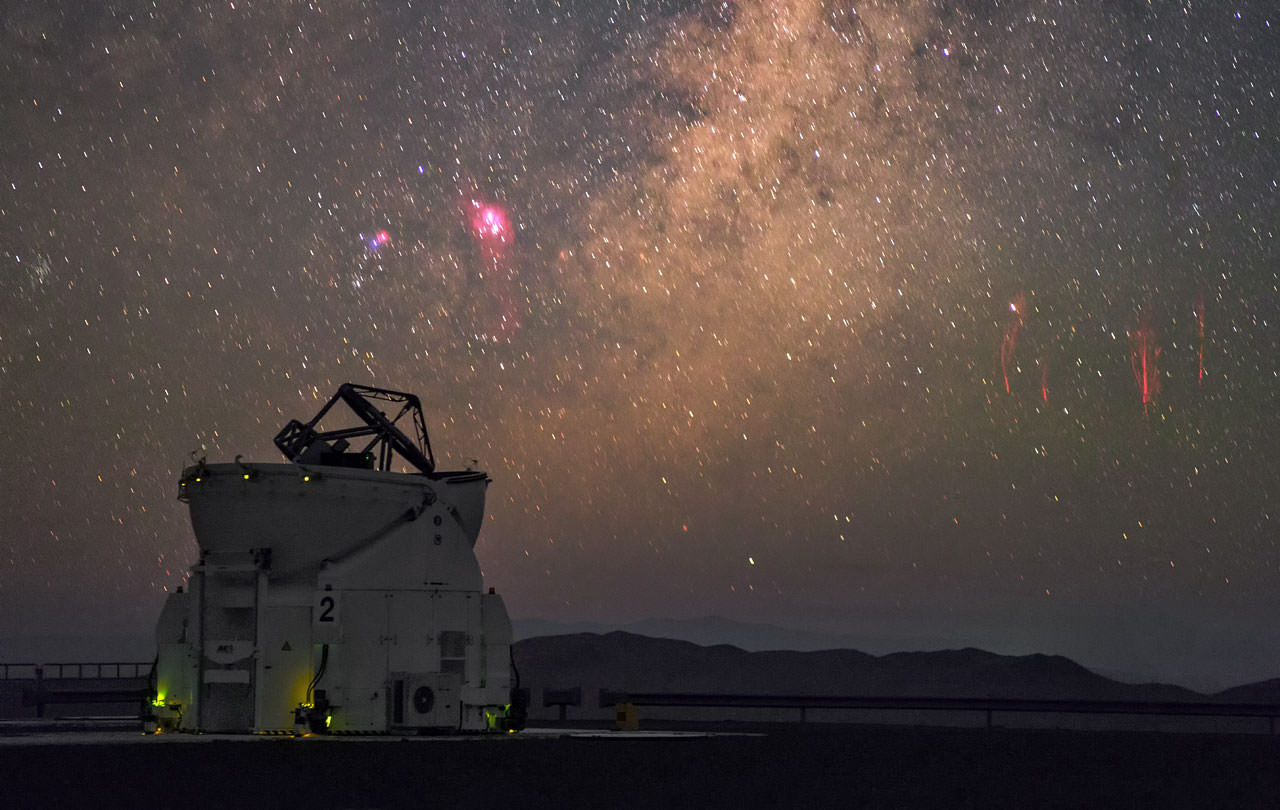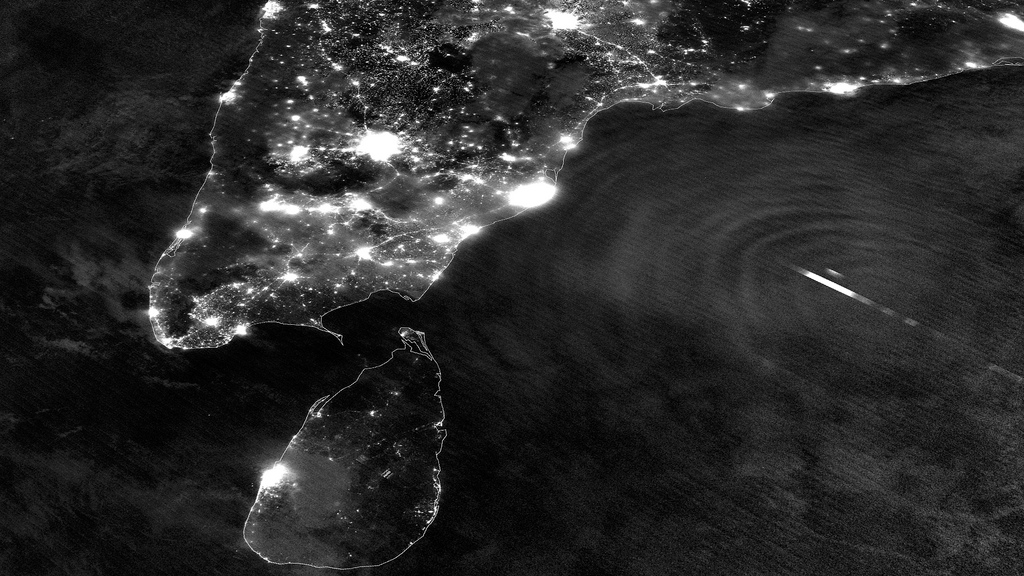Discovering exoplanets is almost routine now. We’ve found over 5,500 exoplanets, and the next step is to study their atmospheres and look for biosignatures. The James Webb Space Telescope is leading the way in that effort. But in some exoplanet atmospheres, lightning could make the JWST’s job more difficult by obscuring some potential biosignatures while amplifying others.
Continue reading “If Exoplanets Have Lightning, it’ll Complicate the Search for Life”Why Pulsars Are So Bright

When pulsars were first discovered in 1967, their rhythmic radio-wave pulsations were a mystery. Some thought their radio beams must be of extraterrestrial origin.
We’ve learned a lot since then. We know that pulsars are magnetized, rotating neutrons stars. We know that they rotate very rapidly, with their magnetic poles sending sweeping beams of radio waves out into space. And if they’re aimed the right way, we can “see” them as pulses of radio waves, even though the radio waves are steady. They’re kind of like lighthouses.
But the exact mechanism that creates all of that electromagnetic radiation has remained a mystery.
Continue reading “Why Pulsars Are So Bright”Every Time Lightning Strikes, Matter-Antimatter Annihilation Happens too

Lighting has always been a source of awe and mystery for us lowly mortals. In ancient times, people associated it with Gods like Zeus and Thor, the fathers of the Greek and Norse pantheons. With the birth of modern science and meteorology, lighting is no longer considered the province of the divine. However, this does not mean that the sense of mystery it carries has diminished one bit.
For example, scientists have found that lightning occurs in the atmospheres of other planets, like the gas giant Jupiter (appropriately!) and the hellish world of Venus. And according to a recent study from Kyoto University, gamma rays caused by lighting interact with air molecules, regularly producing radioisotopes and even positrons – the antimatter version of electrons.
The study, titled “Photonuclear Reactions Triggered by Lightning Discharge“, recently appeared in the scientific journal Nature. The study was led by Teruaki Enoto, a researcher from The Hakubi Center for Advanced Research at Kyoto University, and included members from the University of Tokyo, Hokkaido University, Nagoya University, the RIKEN Nishina Center, the MAXI Team, and the Japan Atomic Energy Agency.
For some time, physicists have been aware that small bursts of high-energy gamma rays can be produced by lightning storms – what are known as “terrestrial gamma-ray flashes”. They are believed to be the result of static electrical fields accelerating electrons, which are then slowed by the atmosphere. This phenomenon was first discovered by space-based observatories, and rays of up to 100,000 electron volts (100 MeV) have been observed.
Given the energy levels involved, the Japanese research team sought to examine how these bursts of gamma rays interact with air molecules. As Teruaki Enoto from Kyoto University, who leads the project, explained in a Kyoto University press release:
“We already knew that thunderclouds and lightning emit gamma rays, and hypothesized that they would react in some way with the nuclei of environmental elements in the atmosphere. In winter, Japan’s western coastal area is ideal for observing powerful lightning and thunderstorms. So, in 2015 we started building a series of small gamma-ray detectors, and placed them in various locations along the coast.”
Unfortunately, the team ran into funding problems along the way. As Enoto explained, they decided to reach out to the general public and established a crowdfunding campaign to fund their work. “We set up a crowdfunding campaign through the ‘academist’ site,” he said, “in which we explained our scientific method and aims for the project. Thanks to everybody’s support, we were able to make far more than our original funding goal.”
Thanks to the success of their campaign, the team built and installed particle detectors across the northwest coast of Honshu. In February of 2017, they installed four more detectors in Kashiwazaki city, which is a few hundred meters away from the neighboring town of Niigata. Immediately after the detectors were installed, a lightning strike took place in Niigata, and the team was able to study it.
What they found was something entirely new and unexpected. After analyzing the data, the team detected three distinct gamma-ray bursts of varying duration. The first was less than a millisecond long, the second was gamma ray-afterglow that took several milliseconds to decay, and the last was a prolonged emission lasting about one minute. As Enoto explained:
“We could tell that the first burst was from the lightning strike. Through our analysis and calculations, we eventually determined the origins of the second and third emissions as well.”
They determined that the second afterglow was caused by the lightning reacting with nitrogen in the atmosphere. Essentially, gamma rays are capable of causing nitrogen molecules to lose a neutron, and it was the reabsorption of these neutrons by other atmospheric particles that produced the gamma-ray afterglow. The final, prolonged emission was the result of unstable nitrogen atoms breaking down.
It was here that things really got interesting. As the unstable nitrogen broke down, it released positrons that then collided with electrons, causing matter-antimatter annihilations that released more gamma rays. As Enoto explained, this demonstrated, for the first time that antimatter is something that can occur in nature due to common mechanisms.
“We have this idea that antimatter is something that only exists in science fiction,” he said. “Who knew that it could be passing right above our heads on a stormy day? And we know all this thanks to our supporters who joined us through ‘academist’. We are truly grateful to all.”
If these results are indeed correct, than antimatter is not the extremely rare substance that we tend to think it is. In addition, the study could present new opportunities for high-energy physics and antimatter research. All of this research could also lead to the development of new or refined techniques for creating it.
Looking ahead, Enoto and his team hopes to conduct more research using the ten detectors they still have operating along the coast of Japan. They also hope to continue involving the public with their research, a process that goes far beyond crowdfunding and includes the efforts of citizen scientists to help process and interpret data.
Further Reading: University of Kyoto, Nature, NASA Goddard Media Studios
What Did Cassini Teach Us?
Ask me my favorite object in the Solar System, especially to see through a telescope, and my answer is always the same: Saturn.
Saturn is this crazy, ringed world, different than any other place we’ve ever seen. And in a small telescope, you can really see the ball of the planet, you can see its rings. It’s one thing to see a world like this from afar, a tiny jumping image in a telescope. To really appreciate and understand a place like Saturn, you’ve got to visit.
And thanks to NASA’s Cassini spacecraft, that’s just what we’ve been doing for the last 13 years. Take a good close look at this amazing ringed planet and its moons, and studying it from every angle.
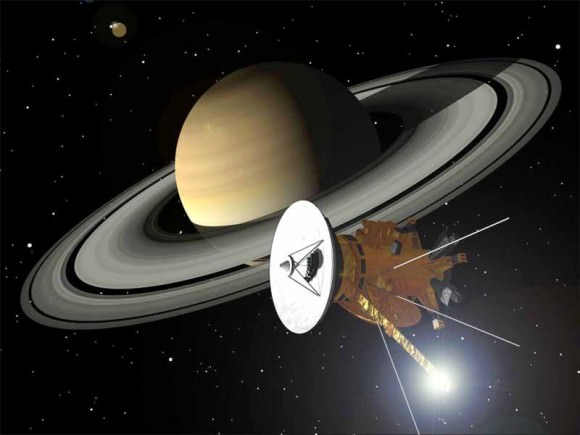
Throughout this article, I’m going to regale you with the amazing discoveries made by Cassini at Saturn. What it taught us, and what new mysteries it uncovered.
NASA’s Cassini spacecraft was launched from Earth on October 15, 1997. Instead of taking the direct route, it made multiple flybys of Venus, a flyby of Earth and a flyby of Jupiter. Each one of these close encounters boosted Cassini’s velocity, allowing it to make the journey with less escape velocity from Earth.
It arrived at Saturn on July 1st, 2004 and began its science operations shortly after that. The primary mission lasted 4 years, and then NASA extended its mission two more times. The first ending in 2010, and the second due to end in 2017. But more on that later.
Before Cassini, we only had flybys of Saturn. NASA’s Pioneer 11, and Voyagers 1 and 2 both zipped past the planet and its moons, snapping pictures as they went.
But Cassini was here to stay. To orbit around and around the planet, taking photos, measuring magnetic fields, and studying chemicals.
For Saturn itself, Cassini was able to make regular observations of the planet as it passed through entire seasons. This allowed it to watch how the weather and atmospheric patterns changed over time. The spacecraft watched lightning storms dance through the cloudtops at night.
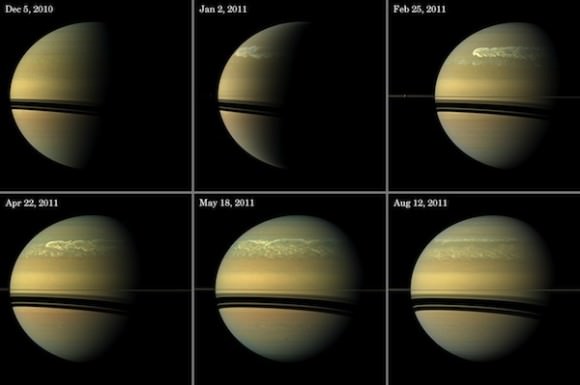
Two highlights. In 2010, Cassini watched a huge storm erupt in the planet’s northern hemisphere. This storm dug deep into Saturn’s lower atmosphere, dredging up ice from a layer 160 kilometers below and mixing it onto the surface. This was the first time that astronomers were able to directly study this water ice on Saturn, which is normally in a layer hidden from view.
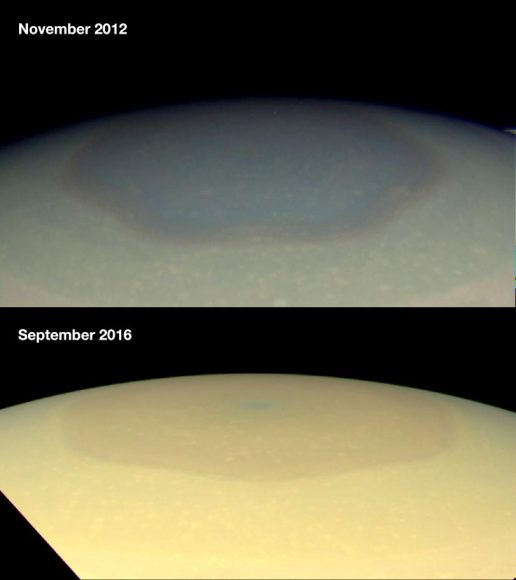
The second highlight, of course, is the massive hexagonal storm churning away in Saturn’s northern pole. This storm was originally seen by Voyager, but Cassini brought its infrared and visible wavelength instruments to bear.
Why a hexagon? That’s still a little unclear, but it seems like when you rotate fluids of different speeds, you get multi-sided structures like this.
Cassini showed how the hexagonal storm has changed in color as Saturn moved through its seasons.
This is one of my favorite images sent back by Cassini. It’s the polar vortex at the heart of the hexagon. Just look at those swirling clouds.
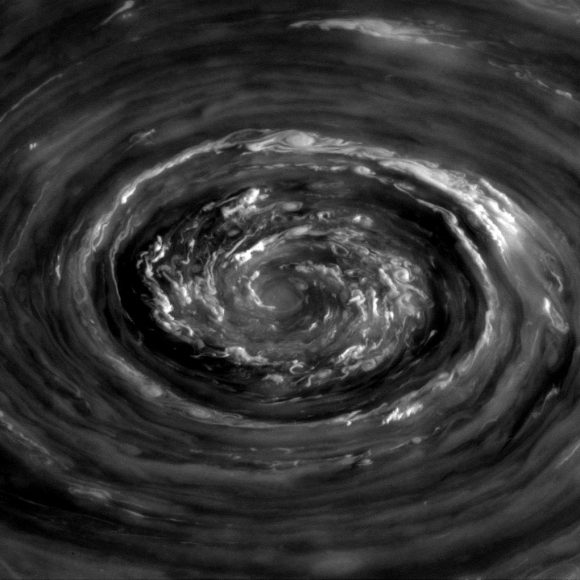
Now, images of Saturn itself are great and all, but there was so much else for Cassini to discover in the region.
Cassini studied Saturn’s rings in great detail, confirming that they’re made up of ice particles, ranging in size as small a piece of dust to as large as a mountain. But the rings themselves are actually quite thin. Just 10 meters thick in some places. Not 10 kilometers, not 10 million kilometers, 10 meters, 30 feet.
The spacecraft helped scientists uncover the source of Saturn’s E-ring, which is made up of fresh icy particles blasting out of its moon Enceladus. More on that in a second too.
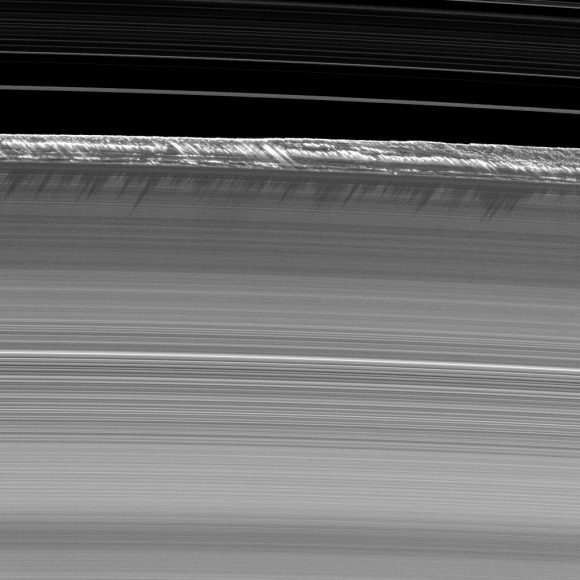
Here’s another one of my favorite images of the mission. You’re looking at strange structures in Saturn’s B-ring. Towering pillars of ring material that rise 3.5 kilometers above the surrounding area and cast long shadows. What is going on here?
They’re waves, generated in the rings and enhanced by nearby moons. They move and change over time in ways we’ve never been able to study anywhere else in the Solar System.
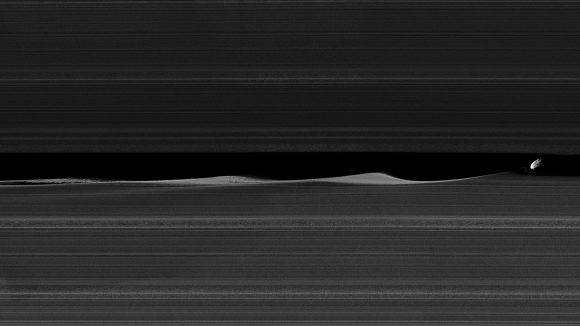
Cassini has showed us that Saturn’s rings are a much more dynamic place than we ever thought. Some moons are creating rings, other moons are absorbing or distorting them. The rings generate bizarre spoke patterns larger than Earth that come and go because of electrostatic charges.
Speaking of moons, I’m getting to the best part. What did Cassini find at Saturn’s moons?
Let’s start with Titan, Saturn’s largest moon. Before Cassini, we only had a few low resolution images of this fascinating world. We knew Titan had a dense atmosphere, filled with nitrogen, but little else.
Cassini was carrying a special payload to assist with its exploration of Titan: the Huygens lander. This tiny probe detached from Cassini just before its arrival at Saturn, and parachuted through the cloudtops on January 14, 2005, analyzing all the way. Huygens returned images of its descent through the atmosphere, and even images of the freezing surface of Titan.
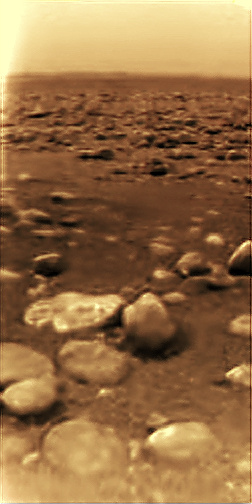
But Cassini’s own observations of Titan took the story even further. Instead of a cold, dead world, Cassini showed that it has active weather, as well as lakes, oceans and rivers of hydrocarbons. It has shifting dunes of pulverized rock hard water ice.
If there’s one place that needs exploring even further, it’s Titan. We should return with sailboats, submarines and rovers to better explore this amazing place.
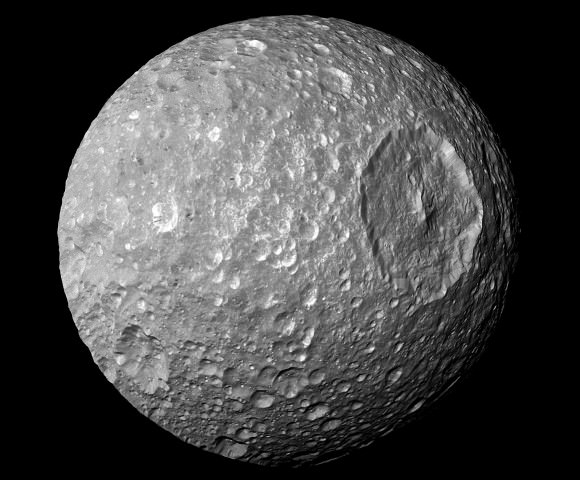
We learned, without a shadow of a doubt, that Mimas absolutely looks like the Death Star. No question. But instead of a megalaser, this moon has a crater a third of its own size.
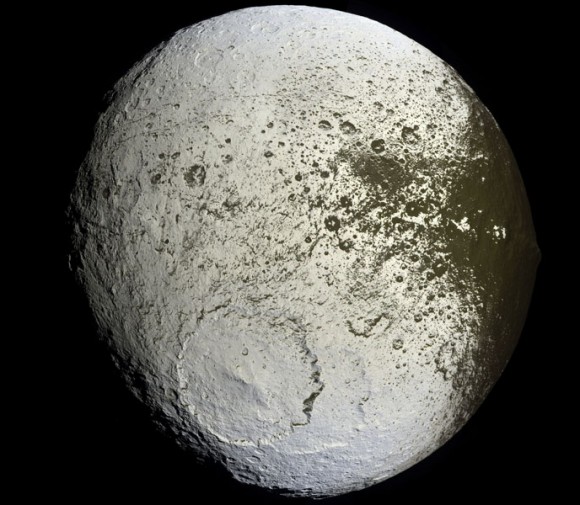
Cassini helped scientists understand why Saturn’s moon Iapetus has one light side and one dark side. The moon is tidally locked to Saturn, its dark side always leading the moon in orbit. It’s collecting debris from another Saturnian moon, Phoebe, like bugs hitting the windshield of a car.
Perhaps the most exciting discovery that Cassini made during its mission is the strange behavior of Saturn’s moon Enceladus. The spacecraft discovered that there are jets of water ice blasting out of the moon’s southern pole. An ocean of liquid water, heated up by tidal interactions with Saturn, is spewing out into space.
And as you know, wherever we find water on Earth, we find life. We thought that water in the icy outer Solar System would be hard to reach, but here it is, right at the surface, venting into space, and waiting for us to come back and investigate it further.
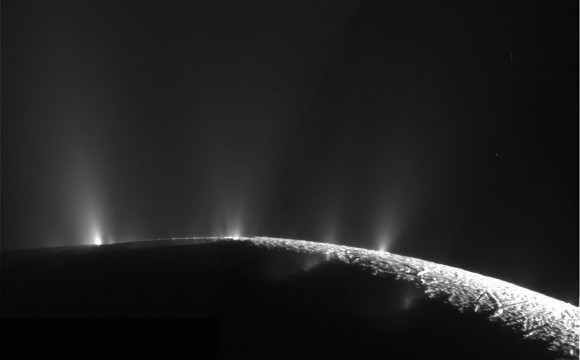
On September 15, 2017, the Cassini mission will end. How do we know it’s going to happen on this exact date? Because NASA is going to crash the spacecraft into Saturn, killing it dead.
That seems a little harsh, doesn’t it, especially for a spacecraft which has delivered so many amazing images to us over nearly two decades of space exploration? And as we’ve seen from NASA’s Opportunity rover, still going, 13 years longer than anticipated. Or the Voyagers, out in the depths of the void, helping us explore the boundary between the Solar System and interstellar space. These things are built to last.
The problem is that the Saturnian system contains some of the best environments for life in the Solar System. Saturn’s moon Enceladus, for example, has geysers of water blasting out into space.
Cassini spacecraft is covered in Earth-based bacteria and other microscopic organisms that hitched a ride to Saturn, and would be glad to take a nice hot Enceladian bath. All they need is liquid water and a few organic chemicals to get going, and Enceladus seems to have both.
NASA feels that it’s safer to end Cassini now, when they can still control it, than to wait until they lose communication or run out of propellant in the future. The chances that Cassini will actually crash into an icy moon and infect it with our Earth life are remote, but why take the risk?
For the last few months, Cassini has been taking a series of orbits to prepare itself for its final mission. Starting in April, it’ll actually cross inside the orbit of the rings, getting closer and closer to Saturn. And on September 15th, it’ll briefly become a meteor, flashing through the upper atmosphere of Saturn, gone forever.
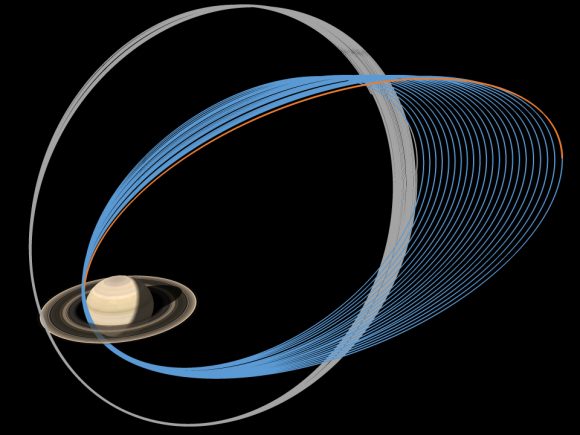
Even in its final moments, Cassini is going to be sciencing as hard as it can. We’ll learn more about the density of consistency of the rings close to the planet. We’ll learn more about the planet’s upper atmosphere, storms and clouds with the closest possible photographs you can take.
And then it’ll all be over. The perfect finale to one of the most successful space missions in human history. A mission that revealed as many new mysteries about Saturn as it helped us answer. A mission that showed us not only a distant alien world, but our own planet in perspective in this vast Solar System. I can’t wait to go back.
How have the photos from Cassini impacted your love of astronomy? Let me know your thoughts in the comments.
Astronomy Cast Ep. 424: Lightning
It turns out that nature figured out how to use electricity long before humans did. Lightning storms are common across the Earth, and even the Solar System. What causes this electricity in the sky, and how can science use it?
Visit the Astronomy Cast Page to subscribe to the audio podcast!
We usually record Astronomy Cast as a live Google+ Hangout on Air every Friday at 1:30 pm Pacific / 4:30 pm Eastern. You can watch here on Universe Today or from the Astronomy Cast Google+ page.
What Causes Lightning?
Thunder and lightning. When it comes to the forces of nature, few other things have inspired as much fear, reverence, or fascination – not to mention legends, mythos, and religious representations. As with all things in the natural world, what was originally seen as a act by the Gods (or other supernatural causes) has since come to be recognized as a natural phenomena.
But despite all that human beings have learned over the centuries, a degree of mystery remains when it comes to lightning. Experiments have been conducted since the time of Benjamin Franklin; however, we are still heavily reliant on theories as to how lighting behaves.
Description:
By definition, lightning is a sudden electrostatic discharge during an electrical storm. This discharge allows charged regions in the atmosphere to temporarily equalize themselves, when they strike an object on the ground. Although lightning is always accompanied by the sound of thunder, distant lightning may be seen but be too far away for the thunder to be heard.
Types:
Lightning can take one of three forms, which are defined by what is at the “end” of the branch channel (i.e. lightning bolt). For example, there is intra-cloud lighting (IC), which takes place between electrically charged regions of a cloud; cloud-to-cloud (CC) lighting, where it occurs between one functional thundercloud and another; and cloud-to-ground (CG) lightning, which primarily originates in the thundercloud and terminates on an Earth surface (but may also occur in the reverse direction).
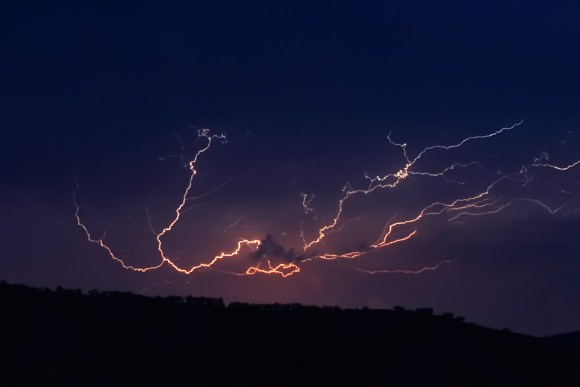
Intra-cloud lightning most commonly occurs between the upper (or “anvil”) portion and lower reaches of a given thunderstorm. In such instances, the observer may see only a flash of light without hearing any thunder. The term “heat-lightning” is often applied here, due to the association between locally experienced warmth and the distant lightning flashes.
In the case of cloud-to-cloud lightning, the charge typically originates from beneath or within the anvil and scrambles through the upper cloud layers of a thunderstorm, normally generating a lightning bolt with multiple branches.
Cloud-to-ground (CG) is the best known type of lightning, though it is the third-most common – accounting for approximately 25% cases worldwide. In this case, the lightning takes the form of a discharge between a thundercloud and the ground, and is usually negative in polarity and initiated by a stepped branch moving down from the cloud.
CG lightning is the best known because, unlike other forms of lightning, it terminates on a physical object (most often the Earth), and therefore lends itself to being measured by instruments. In addition, it poses the greatest threat to life and property, so understanding its behavior is seen as a necessity.
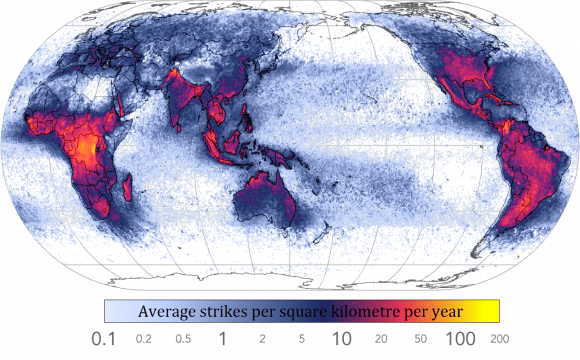
Properties:
Lighting originates when wind updrafts and downdrafts take place in the atmosphere, creating a charging mechanism that separates electric charges in clouds – leaving negative charges at the bottom and positive charges at the top. As the charge at the bottom of the cloud keeps growing, the potential difference between cloud and ground, which is positively charged, grows as well.
When a breakdown at the bottom of the cloud creates a pocket of positive charge, an electrostatic discharge channel forms and begins traveling downwards in steps tens of meters in length. In the case of IC or CC lightning, this channel is then drawn to other pockets of positive charges regions. In the case of CG strikes, the stepped leader is attracted to the positively charged ground.
Many factors affect the frequency, distribution, strength and physical properties of a “typical” lightning flash in a particular region of the world. These include ground elevation, latitude, prevailing wind currents, relative humidity, proximity to warm and cold bodies of water, etc. To a certain degree, the ratio between IC, CC and CG lightning may also vary by season in middle latitudes.
About 70% of lightning occurs over land in the tropics where atmospheric convection is the greatest. This occurs from both the mixture of warmer and colder air masses, as well as differences in moisture concentrations, and it generally happens at the boundaries between them. In the tropics, where the freezing level is generally higher in the atmosphere, only 10% of lightning flashes are CG. At the latitude of Norway (around 60° North latitude), where the freezing elevation is lower, 50% of lightning is CG.
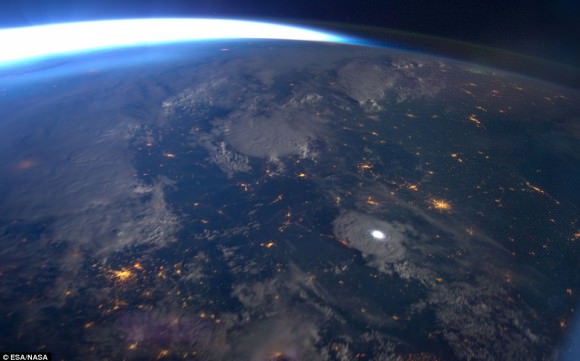
Effects:
In general, lightning has three measurable effects on the surrounding environment. First, there is the direct effect of a lightning strike itself, in which structural damage or even physical harm can result. When lighting strikes a tree, it vaporizes sap, which can result in the trunk exploding or a large branches snapping off and falling to the ground.
When lightning strikes sand, soil surrounding the plasma channel may melt, forming tubular structures called fulgurites. Buildings or tall structures hit by lightning may be damaged as the lightning seeks unintended paths to ground. And though roughly 90% of people struck by lightning survive, humans or animals struck by lightning may suffer severe injury due to internal organ and nervous system damage.
Thunder is also a direct result of electrostatic discharge. Because the plasma channel superheats the air in its immediate vicinity, the gaseous molecules undergo a rapid increase in pressure and thus expand outward from the lightning creating an audible shock wave (aka. thunder). Since the sound waves propagate not from a single source, but along the length of the lightning’s path, the origin’s varying distances can generate a rolling or rumbling effect.
High-energy radiation also results from a lightning strike. These include x-rays and gamma rays, which have been confirmed through observations using electric field and X-ray detectors, and space-based telescopes.

Studies:
The first systematic and scientific study of lightning was performed by Benjamin Franklin during the second half of the 18th century. Prior to this, scientists had discerned how electricity could be separated into positive and negative charges and stored. They had also noted a connection between sparks produced in a laboratory and lightning.
Franklin theorized that clouds are electrically charged, from which it followed that lightning itself was electrical. Initially, he proposed testing this theory by placing iron rod next to a grounded wire, which would be held in place nearby by an insulated wax candle. If the clouds were electrically charged as he expected, then sparks would jump between the iron rod and the grounded wire.
In 1750, he published a proposal whereby a kite would be flown in a storm to attract lightning. In 1752, Thomas Francois D’Alibard successfully conducted the experiment in France, but used a 12 meter (40 foot) iron rod instead of a kite to generate sparks. By the summer of 1752, Franklin is believed to have conducted the experiment himself during a large storm that descended on Philadelphia.
For his upgraded version of the experiment, Franking attacked a key to the kite, which was connected via a damp string to an insulating silk ribbon wrapped around the knuckles of Franklin’s hand. Franklin’s body, meanwhile, provided the conducting path for the electrical currents to the ground. In addition to showing that thunderstorms contain electricity, Franklin was able to infer that the lower part of the thunderstorm was generally negatively charged as well.

Little significant progress was made in understanding the properties of lightning until the late 19th century when photography and spectroscopic tools became available for lightning research. Time-resolved photography was used by many scientists during this period to identify individual lightning strokes that make up a lightning discharge to the ground.
Lightning research in modern times dates from the work of C.T.R. Wilson (1869 – 1959) who was the first to use electric field measurements to estimate the structure of thunderstorm charges involved in lightning discharges. Wilson also won the Nobel Prize for the invention of the Cloud Chamber, a particle detector used to discern the presence of ionized radiation.
By the 1960’s, interest grew thanks to the intense competition brought on by the Space Age. With spacecraft and satellites being sent into orbit, there were fears that lightning could post a threat to aerospace vehicles and the solid state electronics used in their computers and instrumentation. In addition, improved measurement and observational capabilities were made possible thanks to improvements in space-based technologies.
In addition to ground-based lightning detection, several instruments aboard satellites have been constructed to observe lightning distribution. These include the Optical Transient Detector (OTD), aboard the OrbView-1 satellite launched on April 3rd, 1995, and the subsequent Lightning Imaging Sensor (LIS) aboard TRMM, which was launched on November 28th, 1997.
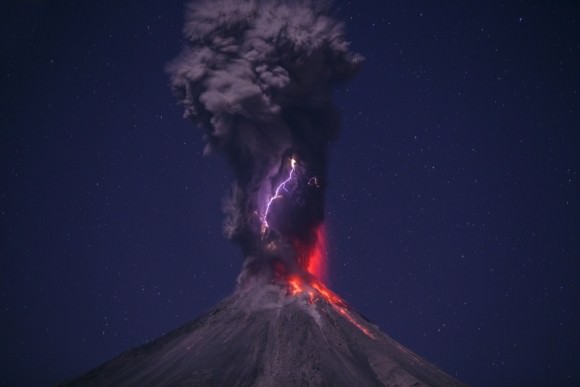
Volcanic Lightning:
Volcanic activity can produce lightning-friendly conditions in multiple ways. For instance, the powerful ejection of enormous amounts of material and gases into the atmosphere creates a dense plume of highly charged particles, which establishes the perfect conditions for lightning. In addition, the ash density and constant motion within the plume continually produces electrostatic ionization. This in turn results in frequent and powerful flashes as the plume tries to neutralize itself.
This type of thunderstorm is often referred to as a “dirty thunderstorm” due to the high solid material (ash) content. There have been several recorded instances of volcanic lightning taking place throughout history. For example, during the eruption of Vesuvius in 79 CE, Pliny the Younger noted several powerful and frequent flashes taking place around the volcanic plume.
Extraterrestrial Lightning:
Lightning has been observed within the atmospheres of other planets in our Solar System, such as Venus, Jupiter and Saturn. In the case of Venus, the first indications that lightning may be present in the upper atmosphere were observed by the Soviet Venera and U.S. Pioneer missions in the 1970s and 1980s. Radio pulses recorded by the Venus Express spacecraft (in April 2006) were confirmed as originating from lightning on Venus.
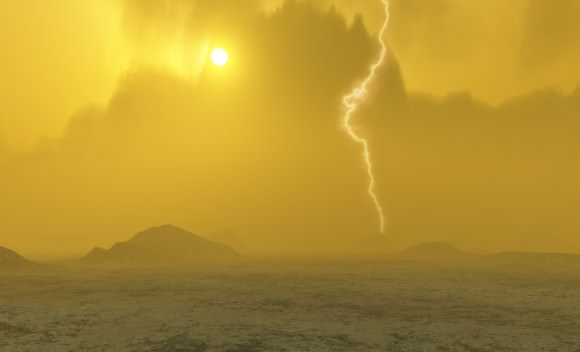
Thunderstoms that are similar to those on Earth have been observed on Jupiter. They are believed to be the result of moist convection with Jupiter’s troposphere, where convective plumes bring wet air up from the depths to the upper parts of the atmosphere, where it then condenses into clouds of about 1000 km in size.
The imaging of the night-side hemisphere of Jupiter by the Galileo in the 1990 and by the Cassini spacecraft in December of 2000 revealed that storms are always associated with lightning on Jupiter. While lighting strikes are on average a few times more powerful than those on Earth, they are apparently less frequent. A few flashes have been detected in polar regions, making Jupiter the second known planet after Earth to exhibit polar lightning.
Lighting has also been observed on Saturn. The first instance occurred in 2010 when the Cassini space probe detected flashes on the night-side of the planet, which happened to coincide with the detection of powerful electrostatic discharges. In 2012, images taken by the Cassini probe in 2011 showed how the massive storm that wrapped the northern hemisphere was also generating powerful flashes of lightning.
Once thought to be the “hammer of the Gods”, lightning has since come to be understood as a natural phenomena, and one that exists on other terrestrial worlds and even gas giants. As we come to learn more about how lighting behaves here on Earth, that knowledge could go a long way in helping us to understand weather systems on other worlds as well.
We have written many articles about lightning here at Universe Today. Here’s an article about NASA’s biggest lightning protection system. And here’s an interesting article about the possible connection between solar wind and lightning.
If you’d like more info on lightning, check out the National Oceanic & Atmospheric Administration (NOAA) Homepage. And here’s a link to NASA’s Earth Observatory.
We also have an episode of Astronomy Cast, titled Episode 51: Earth.
Rare Images of Red Sprites Captured at ESO
At the ESO’s observatories located high in the Atacama Desert of Chile, amazing images of distant objects in the Universe are captured on a regular basis. But in January 2015, ESO photo ambassador Petr Horálek captured some amazing photos of much closer phenomena: red sprites flashing in the atmosphere high above distant thunderstorms.
The photo above was captured from ESO’s Paranal Observatory. A few days earlier during the early morning hours of Jan. 20 Petr captured another series of sprites from the La Silla site, generated by a storm over Argentina over 310 miles (500 km) away.
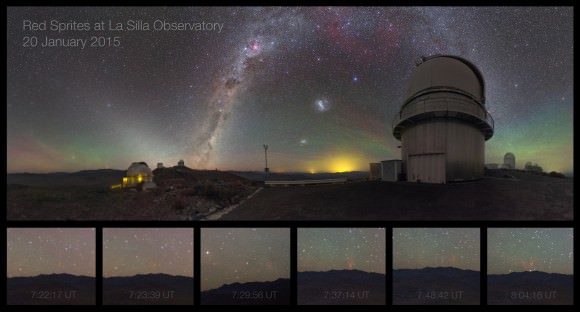
So-named because of their elusive nature, sprites appear as clusters of red tendrils above a lighting flash, often extending as high as 55 miles (90 km) into the atmosphere. The brightest region of a sprite is typically seen at altitudes of over 40-45 miles (65-75 km).
Because they occur high above large storms, only last for fractions of a second and emit light in the portion of the spectrum to which our eyes are the least sensitive, observing sprites is notoriously difficult.
Read more: On the Hunt for High-Speed Sprites
These furtive atmospheric features weren’t captured on camera until 1989. Continuing research has since resulted in more images, including some from the International Space Station. When they are spotted, sprites – and their lower-altitude relatives blue jets – can appear as bright as moderate aurorae and have also been found to emit radio noise. It has even been suggested that looking for sprite activity on other planets could help identify alien environments that are conducive to life.
Find out more about sprite research from the University of Alaska Fairbanks, and check out the PBS NOVA program “At the Edge of Space” below about a sprite hunt in the skies over Denver, CO conducted by a team of American scientists and Japanese filmmakers.
Source: ESO
Astrophoto: Milky Way Rising Above Spectacular Lightning Display
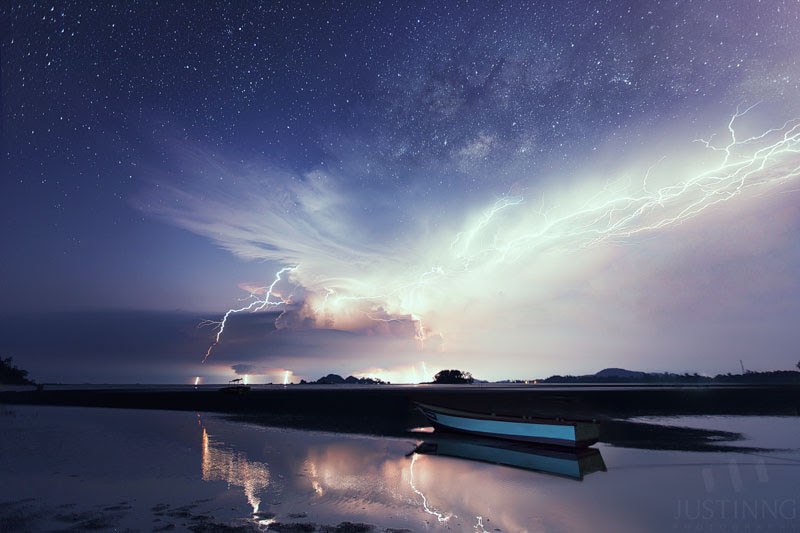
Here’s another beautiful astrophoto, courtesy of photographer Justin Ng from Singapore. He’s currently on a photography trip to Malaysia and by chance captured this absolutely stunning view.
“Knowing that the sky would clear after sunset, I led a group of photographers to this location to film a time-lapse of the rising Milky Way above a lonely boat,” Justin explained via email, “but what happened soon after we started shooting was amazing. We were treated to a spectacular lightning display for about an hour from 9:30pm onwards before the clouds caught up with the rising Milky Way and dominated the skies eventually.”
The image is a result of stacking 12 photos (11 shots of lightnings and 1 shot for everything else) from his time-lapse sequence.
We’re looking forward to seeing the timelapse!
See more images from his current trip here, and you can see more of Justin’s fantastic astrophotography at his website, on G+, Facebook and Twitter.
Want to get your astrophoto featured on Universe Today? Join our Flickr group or send us your images by email (this means you’re giving us permission to post them). Please explain what’s in the picture, when you took it, the equipment you used, etc.
Navy Researchers Put Dark Lightning to the SWORD
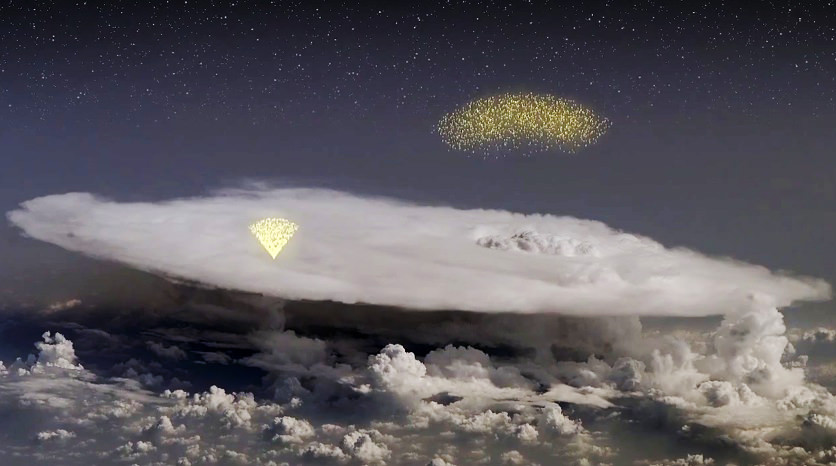
Discovered “by accident” by NASA’s Fermi Gamma-ray Space Telescope in 2010, dark lightning is a surprisingly powerful — yet invisible — by-product of thunderstorms in Earth’s atmosphere. Like regular lightning, dark lightning is the result of a natural process of charged particles within storm clouds trying to cancel out opposing charges. Unlike normal lightning, though, dark lightning is invisible to our eyes and doesn’t radiate heat or light — instead, it releases bursts of gamma radiation.
What’s more, these gamma-ray outbursts originate at relatively low altitudes well within the storm clouds themselves. This means that airplane pilots and passengers flying through thunderstorms may be getting exposed to gamma rays from dark lightning, which are energetic enough to pass through the hull of an aircraft… as well as anything or anyone inside it. To find out how such exposure to dark lightning could affect air travelers, the U.S. Naval Research Laboratory (NRL) is conducting computer modeling tests using their SoftWare for the Optimization of Radiation Detectors — SWORD, for short.
Terrestrial Gamma-ray Flashes (TGFs) are extremely intense, sub-millisecond bursts of gamma rays and particle beams of matter and anti-matter. First identified in 1994, they are associated with strong thunderstorms and lightning, although scientists do not fully understand the details of the relationship to lightning. The latest theoretical models of TGFs suggest that the particle accelerator that creates the gamma rays is located deep within the atmosphere, at altitudes between six and ten miles, inside thunderclouds and within reach of civilian and military aircraft.
These models also suggest that the particle beams are intense enough to distort and collapse the electric field within thunderstorms and may, therefore, play an important role in regulating the production of visible lightning. Unlike visible lightning, TGF beams are sufficiently broad — perhaps about half a mile wide at the top of the thunderstorm — that they do not create a hot plasma channel and optical flash; hence the name, “dark lightning.”
A team of NRL Space Science Division researchers, led by Dr. J. Eric Grove of the High Energy Space Environment (HESE) Branch, is studying the radiation environment in the vicinity of thunderstorms and dark lightning flashes. Using the Calorimeter built by NRL on NASA’s Fermi Gamma-ray Space Telescope they are measuring the energy content of dark lightning and, for the first time, using gamma rays to geolocate the flashes.
As a next step, Dr. Chul Gwon of the HESE Branch is using NRL’s SoftWare for the Optimization of Radiation Detectors (SWORD) to create the first-ever simulations of a dark lightning flash striking a Boeing 737. He can calculate the radiation dosage to the passengers and crew from these Monte Carlo simulations. Previous estimates have indicated it could be as high as the equivalent of hundreds of chest X-rays, depending on the intensity of the flash and the distance to the source.
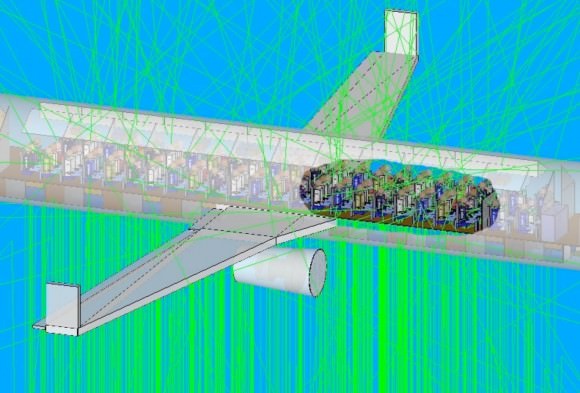
(Credit: U.S. Naval Research Laboratory)
SWORD simulations allow researchers to study in detail the effects of variation in intensity, spectrum, and geometry of the flash. Dr. Grover’s team is now assembling detectors that will be flown on balloons and specialized aircraft into thunderstorms to measure the gamma ray flux in situ. The first balloon flights are scheduled to take place this summer.
Source: NRL News
Weird Gravity Waves Pulse From a Tropical Cyclone
Last Monday, May 13, the Suomi NPP satellite captured a fascinating image of Tropical Cyclone Mahasen as it moved northeast over the Bay of Bengal. The clouds of the storm itself weren’t optically visible in the darkness of a nearly new Moon, but lightning flashes within it were… as well as the eerie ripples of atmospheric gravity waves spreading outwards from its center.
According to the Space Physics Research Group at the University of California, Berkeley:
Gravity waves are the oscillations of air parcels by the lifting force of bouyancy and the restoring force of gravity. These waves propagate vertically as well as horizontally, and actively transport energy and momentum from the troposphere to the middle and upper atmosphere. Gravity waves are caused by a variety of sources, including the passage of wind across terrestrial landforms, interaction at the velocity shear of the polar jet stream and radiation incident from space. They are found to affect atmospheric tides in the middle atmosphere and terrestrial weather in the lower atmosphere. (Source)
Atmospheric gravity waves aren’t to be confused with gravitational waves in space, which are created by very dense, massive objects (like white dwarf stars or black holes) orbiting each other closely.
When the image was captured, Tropical Cyclone Mahasen was moving north through the Indian Ocean along a track that placed landfall along the Bangladesh coast. As it moved off the coast of India Suomi’s VIIRS Day-Night Band was able to resolve lightning flashes towards the center of the storm, along with mesopheric gravity waves emanating outwards like ripples in a pond.
Such gravity waves are of particular interest to air traffic controllers so assist in identifying areas of turbulence.
Since the moon was in a new phase, the lights and other surface features of India and Sri Lanka are clearly visible although the clouds of Mahasen are not — a tradeoff that occurs as the amount of moonlight cycles throughout the month.
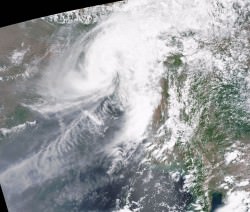
Over the course of the next few days Mahasen weakened into a deep depression, making landfall as a tropical storm on Bangladesh on May 16. In preparation for the storm large-scale evacuations were recommended for parts of Myanmar; however, this resulted in the overcrowding of boats and several vessels capsized. (Source: eosnap.com)
NASA launched the National Polar-orbiting Operational Environmental Satellite System Preparatory Project (or NPP) on October 28, 2011 from Vandenberg Air Force Base. On Jan. 24, NPP was renamed Suomi National Polar-orbiting Partnership, or Suomi NPP, in honor of the late Verner E. Suomi. It’s the first satellite specifically designed to collect data to improve short-term weather forecasts and increase understanding of long-term climate change.
Suomi NPP orbits Earth about 14 times a day, observing nearly the entire surface of the planet.
Main image source: NASA Goddard Space Flight Center

